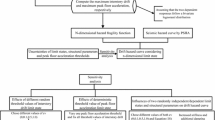Abstract
Several procedures for non-linear static and dynamic analysis of structures have been developed in recent years. This paper discusses those procedures that have been implemented into the latest European and US seismic provisions: non-linear dynamic time-history analysis; N2 non-linear static method (Eurocode 8); non-linear static procedure NSP (FEMA 356) and improved capacity spectrum method CSM (FEMA 440). The presented methods differ in respect to accuracy, simplicity, transparency and clarity of theoretical background. Non-linear static procedures were developed with the aim of overcoming the insufficiency and limitations of linear methods, whilst at the same time maintaining a relatively simple application. All procedures incorporate performance-based concepts paying more attention to damage control. Application of the presented procedures is illustrated by means of an example of an eight-storey reinforced concrete frame building. The results obtained by non-linear dynamic time-history analysis and non-linear static procedures are compared. It is concluded that these non-linear static procedures are sustainable for application. Additionally, this paper discusses a recommendation in the Eurocode 8/1 that the capacity curve should be determined by pushover analysis for values of the control displacement ranging between zero and 150% of the target displacement. Maximum top displacement of the analyzed structure obtained by using dynamic method with real time-history records corresponds to 145% of the target displacement obtained using the non-linear static N2 procedure.
Similar content being viewed by others
References
Applied Technology Council (ATC-40) (1996) Seismic Evaluation and Retrofit of Concrete Buildings, Washington, DC
Causevic M, Zehentner E (2007) Non-linear seismic analysis of structures according to EN 1998-1:2004, Gradevinar, Zagreb, No. 09
Chopra AK (2001) Dynamics of structures—theory and applications to earthquake engineering, 2nd edn. Prentice Hall, New Jersey
Chopra AK, Goel RK (1999) Capacity-demand-diagram methods for estimating seismic deformation of inelastic structures. Pacific Earthquake Engineering Research Centre
Chopra AK, Goel RK (2002) A modal pushover procedure to estimate seismic demands of buildings. Earthq Eng Struct Dyn 31: 561–582
Eurocode 8 (2004) Design of structures for earthquake resistance, Part 1: General rules, seismic actions and rules for buildings, European standard EN 1998-1. European Committee for Standardization (CEN), Brussels
Fajfar P (2000) A nonlinear analysis method for performance based seismic design. Earthq Spectra 16(3): 573–592
Fajfar P, Gaspersic P (1996) The N2 method for the seismic damage analysis of RC buildings. Earthq Eng Struct Dyn 25: 23–67
Federal Emergency Management Agency (FEMA) (2005) Improvement of Nonlinear Static Seismic Analysis Procedures—FEMA-440. Washington, DC
Federal Emergency Management Agency (FEMA) (1997) NEHRP guidelines for seismic rehabilitation of buildings—FEMA 273; NEHRP Commentary on the guidelines for the seismic rehabilitation of buildings—FEMA 274. Washington, DC
Federal Emergency Management Agency (FEMA) (2000) Pre standard and Commentary for the Seismic Rehabilitation of Buildings—FEMA 356. Washington, DC
Gelfi P (2007) SIMQKE_GR, Programma per la generazione di accelerogrammi artificiali spettro-compatibili. University of Brescia, Italy
Mitrovic S, Causevic M (2009) Non-linear static seismic analysis of structures, Gradevinar, Zagreb, No. 6
Naumoski N (1988) Representative ensembles of strong earthquake records, CAEE—The Canadian Association for Earthquake Engineering, http://www.caee.uottawa.ca/
Naumoski N, Tso WK, Heidebrecht AC (1988) A selection of representative strong motion earthquake records having different A/V ratios. Earthquake Engineering Research Group, McMaster University, Hamilton, ON, EERG Report 88-01
NISEE—National Information Service for Earthquake Engineering— University of California Berkeley, Earthquake Engineering Research Centre, http://nisee.berkeley.edu
Pinho R, SeismoSoft SeismoSignal (2007) A computer program for processing strong-motion data, URL:http://www.seismosoft.com
Pinho R, SeismoSoft SeismoStruct (2007) A computer program for static and dynamic nonlinear analysis of framed structures, URL:http://www.seismosoft.com
Rozman M, Fajfar P (2009) Seismic response of a RC frame building designed according to old and modern practices. Bull Earthq Eng 7(3): 779–799
Author information
Authors and Affiliations
Corresponding author
Rights and permissions
About this article
Cite this article
Causevic, M., Mitrovic, S. Comparison between non-linear dynamic and static seismic analysis of structures according to European and US provisions. Bull Earthquake Eng 9, 467–489 (2011). https://doi.org/10.1007/s10518-010-9199-1
Received:
Accepted:
Published:
Issue Date:
DOI: https://doi.org/10.1007/s10518-010-9199-1




